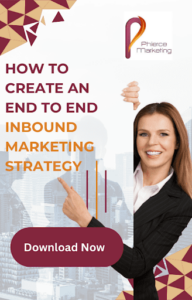Every dollar you invest in your marketing strategy is a dollar you invest in the future of your business. It’s natural, even essential, to ask – is this investment paying off?
We’re talking about Return on Investment, or as we know it, ROI. It’s the steadfast signpost that guides your marketing strategies, illuminating what’s working and what’s not. Measuring the ROI of your inbound marketing isn’t just another addition to your to-do list—it’s the underpinning of your marketing case study, and often, the measure of your business progress.
The truth is, measuring ROI is not a chore—it’s a catalyst for strategic decisions that could move the needle for your business. So buckle up because if you’re serious about making your inbound marketing pay off, you’re about to embark on a revelation-packed journey, one number at a time.
In the following lines, we’ll bare the reality: calculating ROI isn’t just about crunching numbers. It’s about making sense of those numbers, and then following where they lead. Skipping this step is an opt-out from strategic optimization—it’s akin to sailing in uncharted seas without a compass.
The Importance of ROI in Inbound Marketing: Numbers That Talk
Why is ROI a critical metric, you ask? Simple. Its chief role is to show you how effectively your investment in inbound marketing is being transformed into lucrative opportunities. Simply pouring money into various marketing streams devoid of an ROI perspective could lead to a wasteful scattergun approach.
So here’s the rendering plain and simple – not only is ROI essential, but it’s a must-have element in evaluating the success of your inbound marketing strategies. Without clear analysis of your ROI, your entire strategy could be a hit-or-miss, a game of blind darts without a clear target.
Evaluating your ROI is the way to prevent aimlessness. It offers you insights into which parts of your strategy are pulling their weight, which marketing unicorns are delivering golden returns, and which practices are deadweight, draining resources without substantial results.
Remember, what gets measured gets managed—measuring the ROI is the route leading straight to growth and success.
Setting the Stage for ROI Measurement: Clear Objectives, Concrete Results
A strategically fashioned ROI scenario begins with clear objectives and goals. Without clear-cut objectives, you are navigating a ship in a storm, devoid of direction or destination.
ROI calculation is not about mindlessly noting down numbers—it’s about deciphering the narrative behind those numbers. Do the numbers align with our objectives? Are our objectives driving us towards our larger vision? In absence of clarified objectives, ROI measurement is a procedural exercise, void of substance or strategy.
What’s next after setting concrete objectives? KPIs, or Key Performance Indicators. KPIs are your strategic compass, guiding you towards your inbound marketing success. They offer a quantifiable measure of progress, providing a concrete understanding of your strides towards your established objectives.
Without honed KPIs, your ROI measurement is as good as guesstimating—it lacks a defined measure of success, rendering your efforts into a potluck rather than a planned harvest.
Crystal clear objectives and targeted KPIs are the cornerstone of a strategic approach to ROI measurement.
Understanding Inbound Marketing Metrics: Not Just Numbers, But Narratives
The inbound marketing landscape is a forest of metrics. Numbers are everywhere, but the ones worth focusing on are those that contribute to your overall ROI. Simply put, not all metrics are created equal. Some vital ones take the center stage in shaping your inbound marketing ROI:
Website Traffic: Playing a key role in your inbound marketing strategy, website traffic is a telling indicator of the success of your SEO, content marketing, and social media strategies. It’s not just about eyeballs on a page—it’s your first gauge of whether your content resonates.
Lead Generation: Are your marketing efforts beckoning prospective customers to your door? The answer lies in your lead generation numbers. This metric showcases the raw potential in your marketing pipeline—a first peek into potential sales, but not the full picture.
Conversion Rate>: Not all leads graduate into customers—that’s a hard pill we all have to swallow. The conversion rate pulls back the curtain on the effectiveness of your lead nurturing strategy. It informs you whether you’re successfully turning interested parties into invested clients.
Customer Acquisition Cost (CAC)>: It’s a simple equation—how much did you spend to acquire a new customer? Though it may seem crude to boil down customer relationships into dollars and cents, CAC is indispensable in calculating ROI. After all, an expensive customer might not always be a profitable one.
Customer Lifetime Value (CLV): Beyond acquisition costs, understanding the financial value a customer brings over the entirety of their relationship with your business is crucial. If CLV outstrips CAC, your ROI is typically in shape.
Each of these metrics weaves a thread in your ROI story—each contributes a chapter in the tale of your inbound marketing strategy’s success. After all, understanding ROI isn’t about getting lost in the data—it’s about finding the story the numbers tell.
Tools and Techniques for Measuring ROI: The Right Wrench for The Job
Your ability to measure ROI effectively often rests on the tools you have in your kit, and the techniques you employ.
Let’s start by talking tools. Solutions like Google Analytics, Google Search Console, HubSpot, and Kissmetrics aren’t toys for data nerds—they’re workhorses for businesses serious about measuring their ROI. They help you track your website traffic, identify which channels are driving the most leads, understand user behavior, and much more. These applications aren’t window dressing—they’re windows into the heart of your marketing performance.
But tools alone aren’t enough. You need to use them skillfully—and that’s where techniques like attribution modeling and conversion tracking come into play:
Attribution modeling: It’s not a buzzword—it’s a means to assign credit to different marketing touchpoints along your customer’s journey. It aims to unravel the ‘which marketing efforts are truly driving sales’ conundrum.
Conversion tracking: This strategy isn’t a cherry-on-top—it’s the cake itself. It empowers you to identify how users interact with your website and what actions lead them to convert. It’s the lens through which you understand how leads transform into dollars.
Measuring ROI isn’t as simple as 1-2-3. But it doesn’t have to be a leap into the unknown, either. With the right tools and techniques, you can shine a light on the true impact of your inbound marketing strategies.
Dissecting Your Inbound Marketing: Component By Component ROI Analysis
Putting an ROI lens on your entire inbound marketing strategy is the endgame, however, each component of your inbound marketing—content marketing, SEO, social media, email marketing—merits its own standalone ROI evaluation. Let’s dive into some examples.
Content Marketing: Content is king, but that doesn’t mean every piece you create wears a crown. Evaluating your content marketing ROI means looking at metrics like page views, shares, time on page, and, crucially, whether that content drives lead generation and conversions. Remember, a blog post that doesn’t lead a customer down your sales funnel might be more of a jester than a king.
SEO: SEO is not an immediate thrill—it’s a long-term love affair with patience. Your ROI here involves organic site traffic, backlinks quality, keywords ranking, and most importantly, conversions originating from organic search. It’s not just about earning that top spot on Google—it’s about whether that visibility translates to palpable business results.
Social Media: Social media might feel like a popularity contest, but don’t be fooled. Its ROI isn’t measured in likes and shares—it’s about lead generation, click-throughs, and customer conversion. Sure, vanity metrics make for good photo ops, but are they driving customers your way?
Email Marketing: It might seem like an old warhorse in the digital age, but email marketing continues to deliver a staggering ROI when done right. Metrics like click-through rate, conversion rate, and revenue generated per email are key. Remember, an unopened email is an opportunity lost.
Each of these components carries unique ROI considerations. Identifying how each piece of your inbound marketing strategy contributes to your ROI puzzle isn’t a luxury—it’s as necessary as a compass in the maze of marketing metrics. Don’t peddle in illusions; focus on nailing down the ROI every step of the way— because every step counts towards the climbing staircase of success.
Case Studies: Real-World ROI Analysis Without the Smoke and Mirrors
Sometimes, you need tangible proof to believe in the power of ROI measurement in inbound marketing. Let’s not beat around the bush—we’re about to explore real-world cases that exhibit the efficacy of a strategic ROI-focused marketing approach. These are stories of businesses that, like yours, wanted more than just pretty numbers—they craved transformative growth.
B2B Software Company
A mid-sized B2B software company sought to amplify its inbound marketing efforts to facilitate lead generation and sales conversions—all while minimizing their marketing spend. They reached out to us for a transparent, strategically devised plan to make that happen.
The Strategy:
Content Marketing:
We crafted a sharp editorial calendar featuring a steady stream of data-driven, engaging content for their blog—plus, periodic e-books, whitepapers, videos, interactive content, and case studies.
SEO Optimization: With targeted keyword research and on-page optimization, we boosted their organic search traffic by leaps and bounds.
Social Media: A well-executed mix of organic and paid promotion across multiple social media platforms significantly expanded their reach.
Email Marketing: By establishing automated lead nurturing and retention campaigns, we turned lukewarm leads into clients and clients into business advocates.
The Results:
Our strategic recipe served up a 213% increase in leads, while the organic search traffic skyrocketed by an astonishing 345%. But here’s the kicker—their Customer Acquisition Cost (CAC) saw a decline of 47%. Their ROI wasn’t a fleeting victory; it was a financial showstopper.
Wrestling with a Thorny Problem: Overcoming Challenges in Measuring ROI
Measuring your inbound marketing ROI isn’t a cakewalk—it’s akin to climbing a mountain with pitfalls and roadblocks along the way. It’s high time we put these common challenges under the microscope and discuss how to overcome them.
Challenge 1: Quantity Over Quality
There’s a sea of data out there, enough to overwhelm even seasoned marketers. The real struggle is discerning which data points deserve your attention. Not everything that glitters is gold, and not every metric impacts your ROI.
The Solution: You need to determine your Key Performance Indicators (KPIs)—the metrics that truly tie into your business objectives. Once you’ve identified these, you can focus your energies on them and ignore the noise.
Challenge 2: The Time Frame Conundrum
The impact of your inbound marketing tactics may not be immediately visible. SEO and content marketing, for example, are marathon runners—they may take time to show substantial results. However, those results can be very long lasting.
The Solution: Establish and understand the typical sales cycle of your business. This will guide you on the appropriate length of time to gauge the impact of your marketing strategies.
Challenge 3: Attribution Chaos
Credit where credit is due—except when it’s unclear where that “due” is exactly. With multiple campaigns across various channels, pinpointing which strategies impact your ROI can get messy.
The Solution: Adopt an attribution model, like multi-touch or last-click, based on the nature of your business and its sales process. The goal is to adequately credit different marketing efforts based on their contribution.
Challenge 4: Technological Hurdles
No two ways about it—mastering the technology tools used in ROI tracking can be intimidating. They promise insights but deliver shrouded in learning curves and technical nuances.
The Solution: Invest time (and, when necessary, money) into understanding the tools you use. Training sessions, webinars, guides, or even hiring a specialist can make a difference.
Measuring ROI can sometimes feel like navigating a labyrinth. However, if you equip yourselves with the right strategies to hurdle these roadblocks, on the other side, lies a clear understanding of how your marketing drives growth—and that’s the prize worth climbing mountains for.
Continuous Improvement and ROI Optimization: The Road to Inbound Marketing Mastery
Marketing is a living, breathing entity, and understanding its ever-changing rhythms calls for continuous monitoring, nimble adjustments, and ruthless optimization. Let’s dive into what really makes the ROI needle move.
Iterative Nature of ROI Measurement
ROI isn’t a one-time snapshot—it’s an evolving picture. The only constant in the marketing landscape is change. Consumer behavior shifts faster than sand dunes, platforms evolve at lightning speed, and competing strategies spring up like weeds. There’s no coasting to success on a single idea.
The key is to measure, monitor, and re-measure your marketing components’ performance across defined periods. The more information you gather, the sharper your insights become—and the better equipped you’ll be to make targeted, high-impact strategic decisions.
Constant Optimization for Better Results
You may not get it perfect on the first try- that’s no reason to pack up and head home. Enterprises that thrive in today’s marketing arena are those who openly embrace optimization. Observe your numbers, glean insights from them, and then roll those lessons back into your campaigns.
It might be tweaking headlines, revolutionizing calls to action, or switching formats—it all comes down to responding to your audience’s needs, habits, and preferences. The goal is simple: a continual fine-tuning of your inbound marketing to amplify ROI. This is not just about serving your customers better—it’s about staying ahead of the curve.
Charter an ever-improving course towards business growth. Embodying the iterative nature of ROI measurement and striving for constant optimization is the essence of a solid marketing approach—and where real results emerge from the cacophony of marketing claims.





